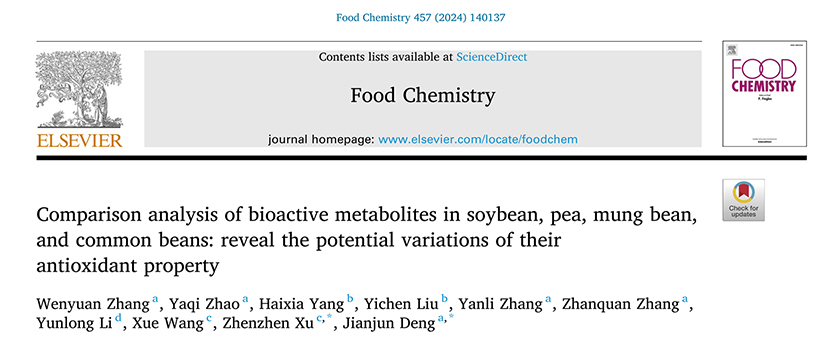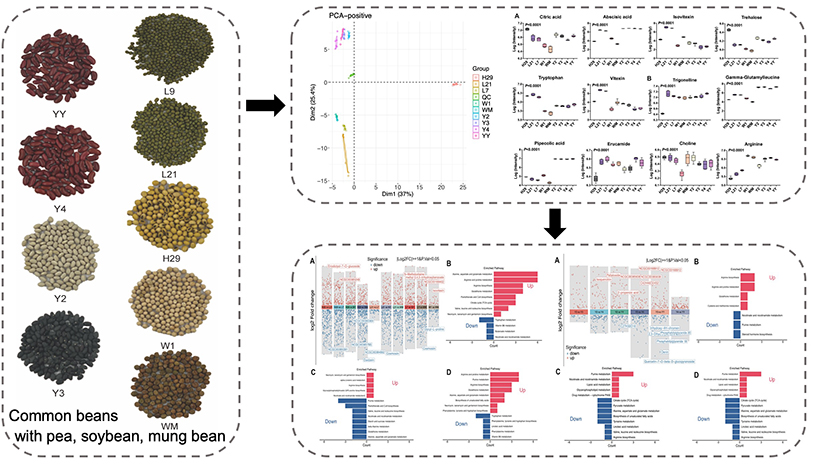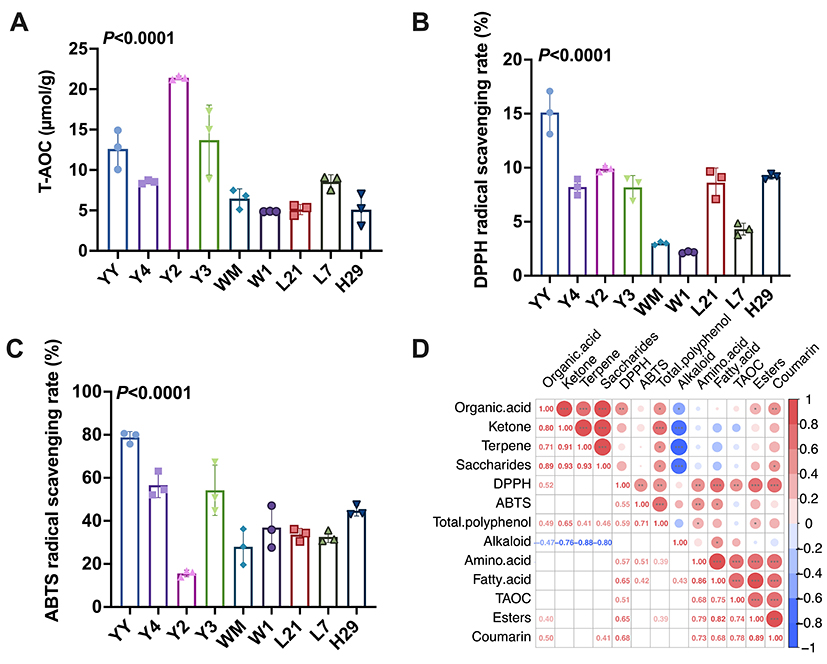Recently, the Postharvest and Nutritional Group of the Institute of Vegetables and Flowers, Chinese Academy of Agricultural Sciences, identified the metabolite compositions in common beans and their correlations between the metabolites and antioxidant activity. This study was published in Food Chemistry (IF=8.5), entitled "Comparison analysis of bioactive metabolites in soybean, pea, mung bean, and common beans: reveal the potential variations of their antioxidant property ".

Legumes are one of the most important edible crops in the world, providing humans with abundant nutrients such as protein, carbohydrates, and fat. They play the critical roles in balancing diets, regulating metabolism, and improving human nutrition and health. Of these, common beans (Phaseolus vulgaris) are widely grown and consumed worldwide, which have important nutritional and economic value. However, there are limited studies about the metabolite composition of common beans, which limits the applications and productions of related functional products. This study used non-targeted metabolomics to systematically analyze the differences in functional substances between common beans and other major beans such as soybeans, mung beans, and peas, and analyzed the correlations between the main metabolites and antioxidant activity. This study provides a theoretical guideline and the data support for the production of functional products based on beans and the creation of related health products.

Figure 1 Comparison analysis of metabolite composition between common beans and other types of beans

Figure 2 Comparison analysis of antioxidant activity and their correlations with metabolites between common beans and other types of beans
The first author is the assistant researcher Zhang Wenyuan in the Postharvest and Nutritional Group of the Institute of Vegetables and Flowers, Chine se Academy of Agricultural Sciences. Professor Xu Zhenzhen and Professor Deng Jianjun are the co-corresponding authors. This research was funded by the Innovation Engineering Project of the Chinese Academy of Agricultural Sciences.
Link to this paper: https://doi.org/10.1016/j.foodchem.2024.140137
By Wenyuan Zhang (zhangwenyuan@caas.cn)